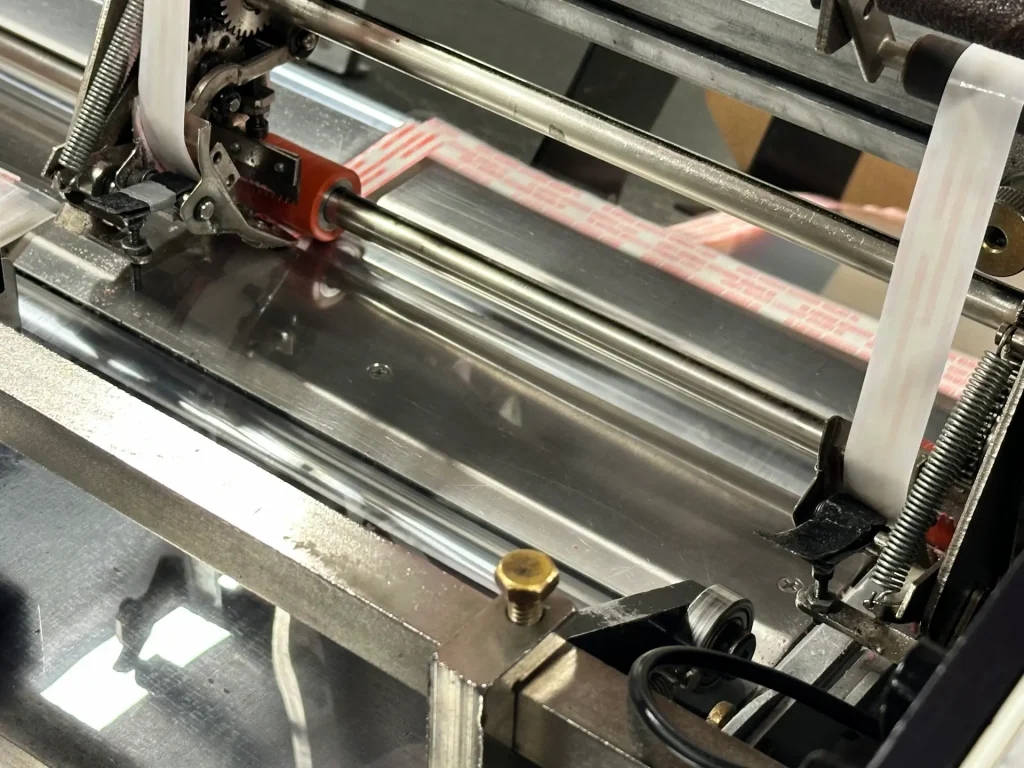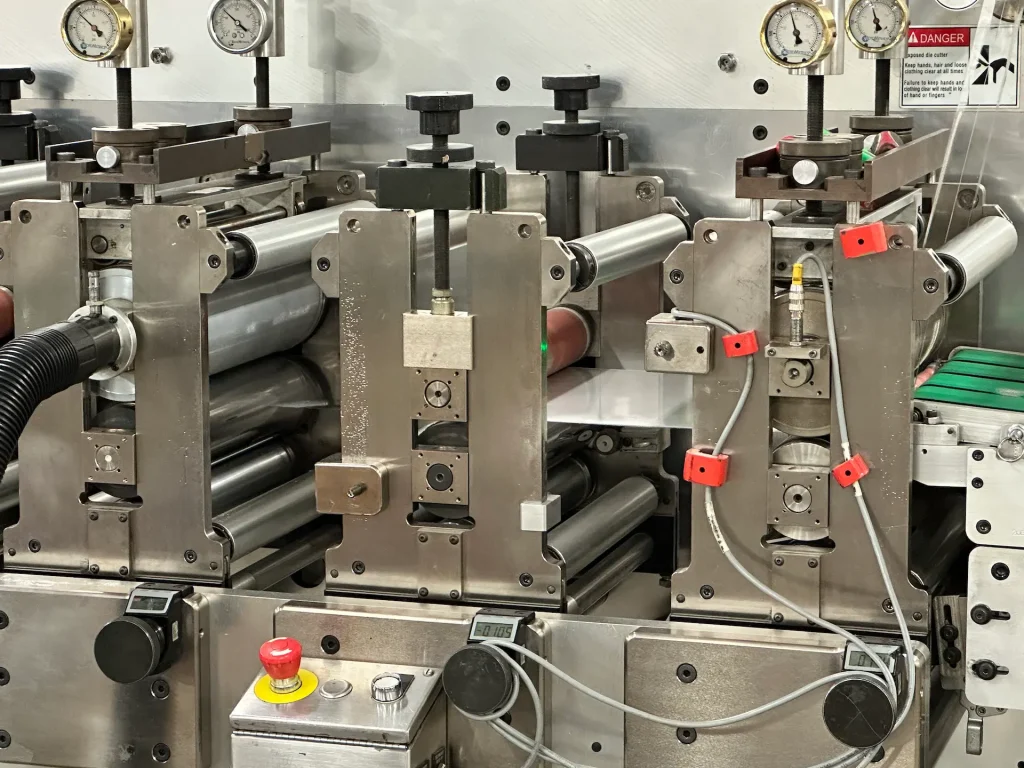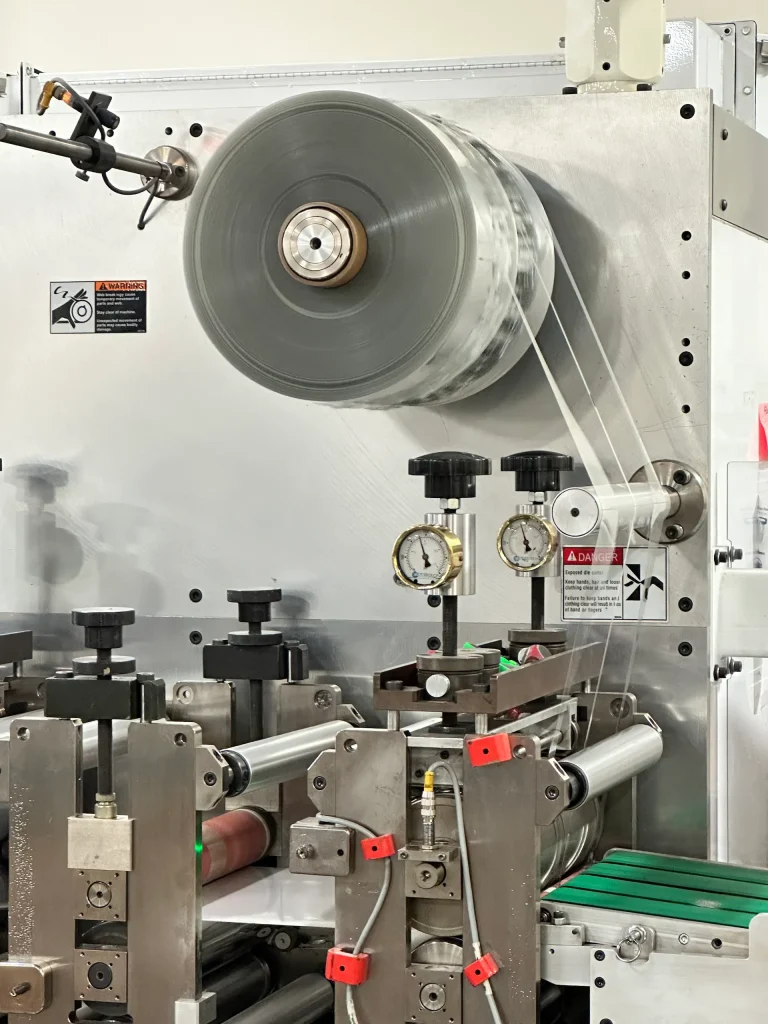
Working with natural materials is one of the hardest manufacturing processes to scale. When accuracy and precision are crucial rely on the custom leather die cutter experts at Colvin Friedman to ensure that your die-cut pieces meet your standards each and every time.
Or call Josh at (707) 769-4488
While leather is a popular material for a wide variety of products, ranging from shoes to holsters, harnesses and more, there is no perfect source. Unlike synthetics, suppliers can offer ranges of thicknesses and they are measured in ounces. While 1/64th of an inch per ounce might not seem like much, it means that a popular method for large-scale die cutting, the rotary press, is not a feasible option, even for the thinnest natural materials.
Instead, leather die cutting should be performed using either a steel rule or forged die. Which one makes the most sense depends on the intricacy of design, type of leather, thickness and overall production volume. If you are still considering leather for your product, the following are common weights and applications.
1-3
4-6
7-9
10-12
13-16
1/64-3/64
1/16 to 3/32
7/64 to 9/64
5/32 to 3/16
13/64 to 1/4
Detail work like embossing, linings, vests
Shoes and boots, chaps, small sheaths
Electronics cases and covers, dog collars, belts
Thick straps, gun belts, halters, stirrup straps
Soles (in layers), machine belts, safety belts
The two most common methods for working with leather using the die cut process are steel rule and flatbed. What can be confusing to some looking for a custom leather die cutter is that steel rule is a type of flatbed die cutting.
More specifically, a steel rule die will take the form of a sheet of steel molded or cut to the specifications of a consumer and then mounted on a piece of wood or plexiglass in order to provide a wide stable surface for the press to exert force upon. Depending on the thickness of the steel used, very detailed leather designs are possible, making it an excellent choice for smaller, intricate leather cutting needs.
What is commonly known as flatbed die cutting is still the same process: the substrate (in this case leather), is placed over the die and then a press evenly applies pressure until the required cuts or designs are left in the original material. However, flatbed die cutting can include different types of dies such as solid steel or others. These can be used in situations where a steel rule die may not be large enough for the pattern to be cut or if the desired thickness of the leather presents issues during the design phase.
Using other types of tooling can also be beneficial for those who are looking for a larger production run, as the dies will last for a longer period of time.
While both are very similar, there are differences in steel rule die cutting and flatbed die cutting that can affect output and production rate that are worth knowing. More specifically, here are some pros and cons..
Easy to start with due to low upfront cost in die production
More flexibility if designs need to change frequently even on a single product line (like custom designs)
Cost effective for short and medium batch runs
Steel rule dies may need to be less complex to cut through thicker leather
Other tooling may offer more cost savings on a larger scale
Not as useful for larger pieces or panels.
Effective cutting for thicker leather pieces
Flexibility of using other types of dies
Great for scaling up to larger production figures
May be able to do more than one operation per pass, such as for embossing
May not be as efficient in small batches or prototype runs
Other types of die can be more expensive to produce
Overall, since steel rule dies are often combined with flatbed presses, it requires an experienced custom leather die cutter to figure out which process to use. That’s even true for different parts of the same product. For example, a leather purse might have eight- or nine-ounce leather straps, while the actual bag itself is four- or five-ounce. A cowboy boot might have custom embossing done in three-oz leather, the rest of the upper done in five-six ounce leather and the soles in layers of 16-ounce leather!
Or call Josh at (707) 769-4488
Whether you opt for steel rule die cutting or another type of flatbed process, the experts at Colvin Friedman follow the same exacting process for ensuring that you get the precision and quality you’re looking for from a custom leather die cutter, starting with design and including stocking and packaging:
Evaluate the customer's die-cut design and choose the die-cut material and method
Die creation experts custom tool your die for maximum precision and reliability
Ensure initial designs pass all quality tests before mass production
Our team efficiently produces products to meet customer deadlines and quality standards
High quality user packaging and shipping to distribution centers
Integration with your inventory system to maintain desired stocking levels
01
As noted above, we start with either a prototype from our customer or help develop one that can be fabricated into a die-cut design. Based on materials, cost and other factors, we’ll help select between steel rule or another type of flatbed press die process with tests to ensure proper functionality and fitment.

02
Leveraging our 70 years of expertise, we’ll custom-tool the production environment and source the highest quality dies to ensure that cuts will be precise regardless of material thickness and accurate to the customer’s original specifications.

03
We produce initial product samples for QMS (quality management system) approvals. This ensures that all tolerances are met and there are no potential issues that could arise during the actual production run.

04
As with the other steps, team of custom leather die cutters at Colvin Friedman are in consistent contact with the customer during the production run to apprise them of any potential change in production rates as well as updates on shipping timelines.
We work with customers who use Kanban, Just-In-Time and other stocking systems to ensure that Colvin Friedman is never the weak link in the supply chain. We also frequently work with custom boxing and other materials that can be assembled along with parts for direct shipment to your preferred distribution center.
As we’ve seen, die cutting can provide a quality process for precision leather part creation and customization. Still, it is important to keep in mind that with a natural material, there is variability in thickness and other factors that can affect what die cutting options are available. Here are four tips to ensure that your project runs smoothly:
01. Choose a process that works within the tolerances of your material supplier : Most leather supply companies offer ranges of weights, or thicknesses. An experienced custom leather die cutter will know this and ensure that their dies, whether steel rule or otherwise, can handle this and still maintain the tolerances of the original design.
02. Have a solid estimate of the number of pieces you’re looking for in a given run : Steel rule dies are relatively quick to produce and can be used for small, intricate designs. However, there is a point when moving to other die options may make sense based on the volume you’re expecting to produce.

03. Ensure you work with a die cutter who can minimize waste : Unlike synthetic materials, leather is far more expensive per square inch. Find a die cutting specialist who knows how to work with designs to ensure minimal waste per sheet of leather to maximize your budget.
04. Make sure you find a communicative business partner :
Many leather die cutting projects start with prototype runs and will ramp up based on sales or customer interest. Being able to change out steel rule dies, for example, is a relatively easy process but only if your supplier is in constant contact and can work with you to make any needed changes.

If you would like more information about our custom die-cutting services, process, or product capabilities, please use the number below to call our Vice President, Josh Rodman. If you would like to receive a free project quote, click the button below.
Or call Josh at (707) 769-4488
We have been a leading provider of die cutting services for over 75 years. Trust us to provide the customer service of a small business with the capabilities of a large organization.
1311 Commerce Street • Petaluma, CA 94954
Copyright © 2025 Colvin Friedman Company. All Right Reserved.